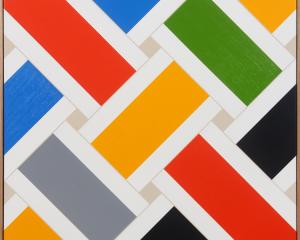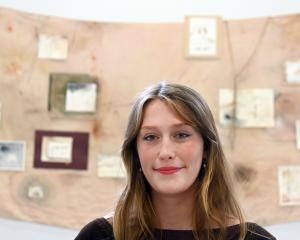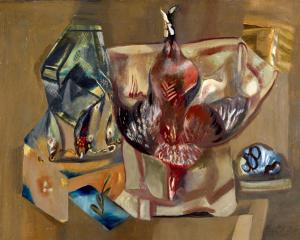Summer is a time when many of Dunedin's art galleries are either shut or display stock shows rather than specific exhibitions.
It is also - supposedly - a time of fine weather, when it is more pleasant to explore Dunedin's open spaces and public art.
The city is blessed with an abundance of publicly accessible sculpture, some well known but more tucked away in unexpected places.
Many suburbs and parks are home to surprising or attractive works, often little-known even by locals.
One charming, neglected work in this category is Moira Joy Crossman's He aihe, a 2000 work comprising three basalt dolphins breaching their stone waves.
The simple, smooth lines of creatures' bodies belie the tough solidity of the volcanic rock.
The work can be seen as a partner to the larger whale form by the same artist close to State Highway 1 in Waikouaiti.
The work is within the grounds of Macandrew Intermediate School close to Macandrew Rd, but the removal in recent years of a former building has left it in clear sight to all visitors to the school and nearby Tonga Park.
Sadly, the work has some minor damage (the stone is chipped in places), yet the beauty of this largely ignored sculpture's clean lines remains.
• Another work passed by many without a second glance is Paul Dibble's The journey.
This piece is also in institutional yet public space, providing a touch of slightly incongruous whimsy to the stark atrium of the central police station.
In doing so, it adds a note of levity to what is otherwise a serious and - for some - forbidding location.
Dibble is a nationally renowned craftsman, working from Palmerston North.
His fine cast works are frequently allegorical, and are filled with the artist's own imaginative symbolic language.
The journey is no exception, with Dibble's trademark rabbit and shell joined by a koru and boat of sheep, all surrounding the central mermaid figure.
The bronze, with its elegant fluid lines, provides a narrative of New Zealand history.
Tellingly, later variants on the design have been entitled The arrivals: this is not a random point on some traverse, but the moment of reaching the new land.
The mermaid could be seen as Zealandia herself, holding aloft the koru of new growth and - through its long association with Air New Zealand - travel by air.
The boat of sheep is both travel by sea and our history of trade.
Yet there is enough here for any viewer to read their own tales into the work.
• Not all of Dunedin's public art is little known.
More has been written in recent years about Regan Gentry's Harbour mouth molars than any other Dunedin sculpture.
Debate has raged over their status as art, as good art, and over their cost.
The sculptures are undeniably art.
Art comes in many guises, and whether you find our Toothhenge attractive is largely irrelevant.
Many of the world's great works of art are not classically beautiful, and are not designed to be.
De Kooning's paintings, Stockhausen's music, Christo's installations - none fits the expected definitions of beauty.
True art is, however, always thought provoking, and the screeds written about the molars is proof that they are this.
Whether they are good art is another question, though, again, these probably qualify.
An original concept well wrought in Oamaru stone and rope, they provide a unique and distinctive harbourside focal point.
The last question is - and always will be - debatable, depending on the individual's view on public patronage of the arts.
But the debate has not only raised questions of the work itself, but also of how we see art, how we see our city and the relationship between the two.
Without such debate - and without public arts patronage - our relationship with the city would be poorer.












